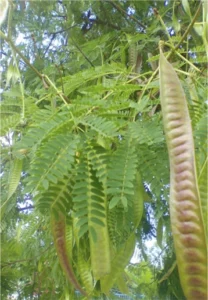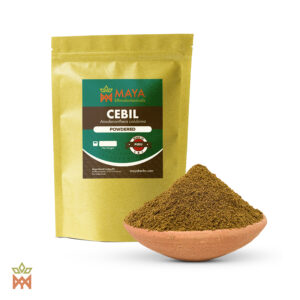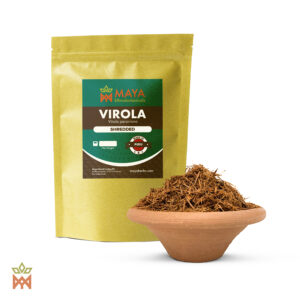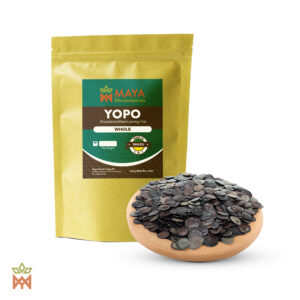Showing all 4 results
- Price range: € 18,50 through € 184,00 Incl. VATSelect options This product has multiple variants. The options may be chosen on the product page
- Price range: € 7,45 through € 70,75 Incl. VATSelect options This product has multiple variants. The options may be chosen on the product page
- Price range: € 6,95 through € 199,95 Incl. VATSelect options This product has multiple variants. The options may be chosen on the product page
- Price range: € 6,35 through € 82,00 Incl. VATSelect options This product has multiple variants. The options may be chosen on the product page
Showing all 4 results
What is Yopo?
One of the oldest psychedelics humans have ever used, yopo has been opening the portal for nature and human consciousness to connect for millennia. In this article, we’ll trace this magical tree’s roots through time, explore its traditional and contemporary uses, and take a journey through its effects and potential for consciousness expansion.
 Yopo is a remarkable tree endemic to Central America and parts of South America, specifically Paraguay, Brazil, Colombia, Venezuela, Argentina, Surinam, Guyana, and the Caribbean. It grows tall and beautiful, with a wide bushy crown of mimosa-like leaves, an ominously horny trunk, and lanky branches sprinkled with clusters of puffy acacia-like flowers.
Yopo is a remarkable tree endemic to Central America and parts of South America, specifically Paraguay, Brazil, Colombia, Venezuela, Argentina, Surinam, Guyana, and the Caribbean. It grows tall and beautiful, with a wide bushy crown of mimosa-like leaves, an ominously horny trunk, and lanky branches sprinkled with clusters of puffy acacia-like flowers.
Depending on its native region, yopo goes by different names — most notably jopo, cohoba, paricá, angíco, niopo, and the calcium tree — whereas to science it’s known as Anadenanthera peregrina.
The synergy of these compounds is, led predominantly by the abundant bufotenin, is experienced by means of insufflation of its powdered seeds; it induces the mind-enhancing psychoactive effects which have been harnessed by various South and Central American indigenous communities since ancestral times.
Archaeological findings from the Argentinian excavation site Inca Cueva suggest that the use of yopo seeds in that region may date back more than 4,000 years. Trays and tubes resembling those used for yopo snuff, called epéna, ebéne, or ebéna, were also found along the central Peruvian coast and have been dated back to 1,200 BC.
While the ceremonial use of yopo seeds as snuff in the Caribbean declined after the arrival of the conquistadors, it has persevered in the Amazon jungle, particularly in Brazil and Venezuela, where indigenous communities continue the tradition to this day.
The Amazonian Shamanic Snuff Trees
A closely related species, which shares some of its native land with yopo but grows and is used much more abundantly throughout the Amazon, is Anadenanthera colubrina, commonly known as vilca or cebil. These two plants have a significant botanical and pharmacological overlap, and are similarly ritualized in Amazonian plant medicine practices.
Aside from these two leguminous trees, several species of the Virola genus, e.g. Virola peruviana, are also used for producing psychoactive snuff in the Amazon, although Virola powder, called nyakwana or yakee, is made from the tree sap with optional admixtures — typically ashes of other plants.
The Culture of Yopo Use
Yopo seed snuff holds an important place in indigenous Amazonian medicine and spiritual practices. The powdered seeds are traditionally inhaled or, more commonly, blown into the receiver’s nostrils, and the experience is said to catalyze physical, energetic, psychological, and spiritual enhancements.
The snuff can have stimulant effects, which have been employed by indigenous tribespeople to enhance alertness and perception before activities such as drinking sprees, hunting expeditions, or warfare. As a medicine, yopo snuff has been used to treat internal bleeding.
Many indigenous cultures have also developed elaborate shamanic traditions around the use of yopo seeds. Yopo ceremonies typically feature prayers, chants, music, and various ritualistic practices; during them the snuff receivers can experience profound psychedelic effects, often characterized by trance-like states, visions, and communication with spirits.
Shamans can tap into yet higher states of consciousness and perform divination under the effects of yopo. Moreover, in certain cultures, like the Piaroa in South Venezuela, yopo preparations reportedly include ayahuasca vine (B. caapi) bark cuttings, and doses of caapi brew are also consumed prior to snuff inhalation in order to increase the strength of visions.
Aside from the snuffing rituals, different parts of the yopo tree have been traditionally used for an array of medicinal purposes. The bark, for instance, has been employed against allergies, asthma, bronchitis, cough, diarrhea, dysentery, flatulence, hemorrhage, and pneumonia, while the gum derived from yopo has served to treat bruises, asthma, cough, pneumonia, gonorrhea, herpes, and ulcers.
Is Yopo Legal?
While yopo seeds do contain several psychoactive compounds which are scheduled in many countries, the plant itself, whether in the form of seeds or live cuttings, remains legal throughout most of the world.
Where to Buy Yopo Seeds?
Here at Maya Ethnobotanicals, we offer a range of traditional medicinal plants which have been used by indigenous peoples for a variety of purposes since ancient times.
Our products are organically grown, sustainably harvested, and sourced through fair trade, and we sell them with the intention to promote ethnobotanical enthusiasm throughout the world.
If you’re looking to buy yopo seeds, you may purchase them from our webshop: Buy yopo seeds





